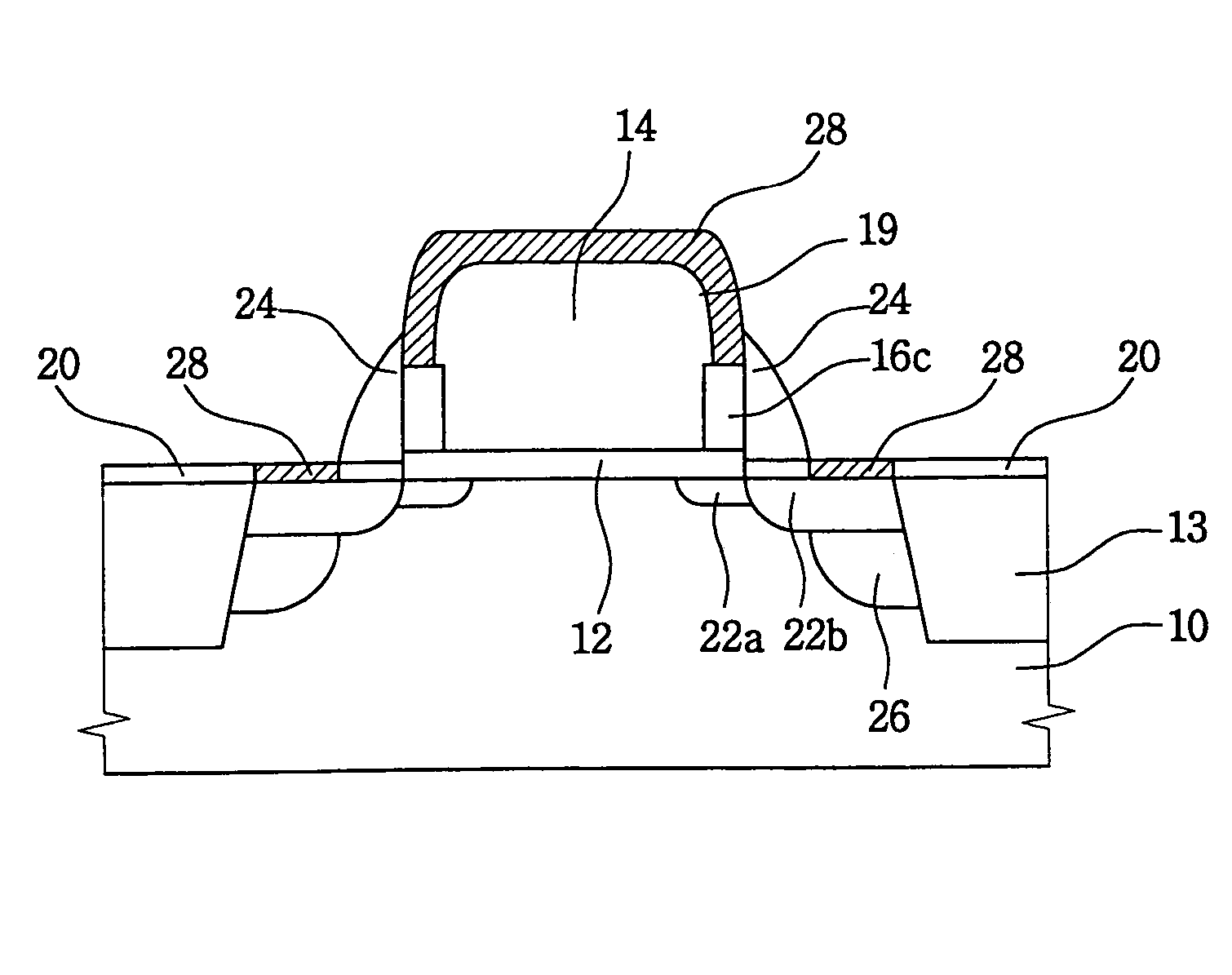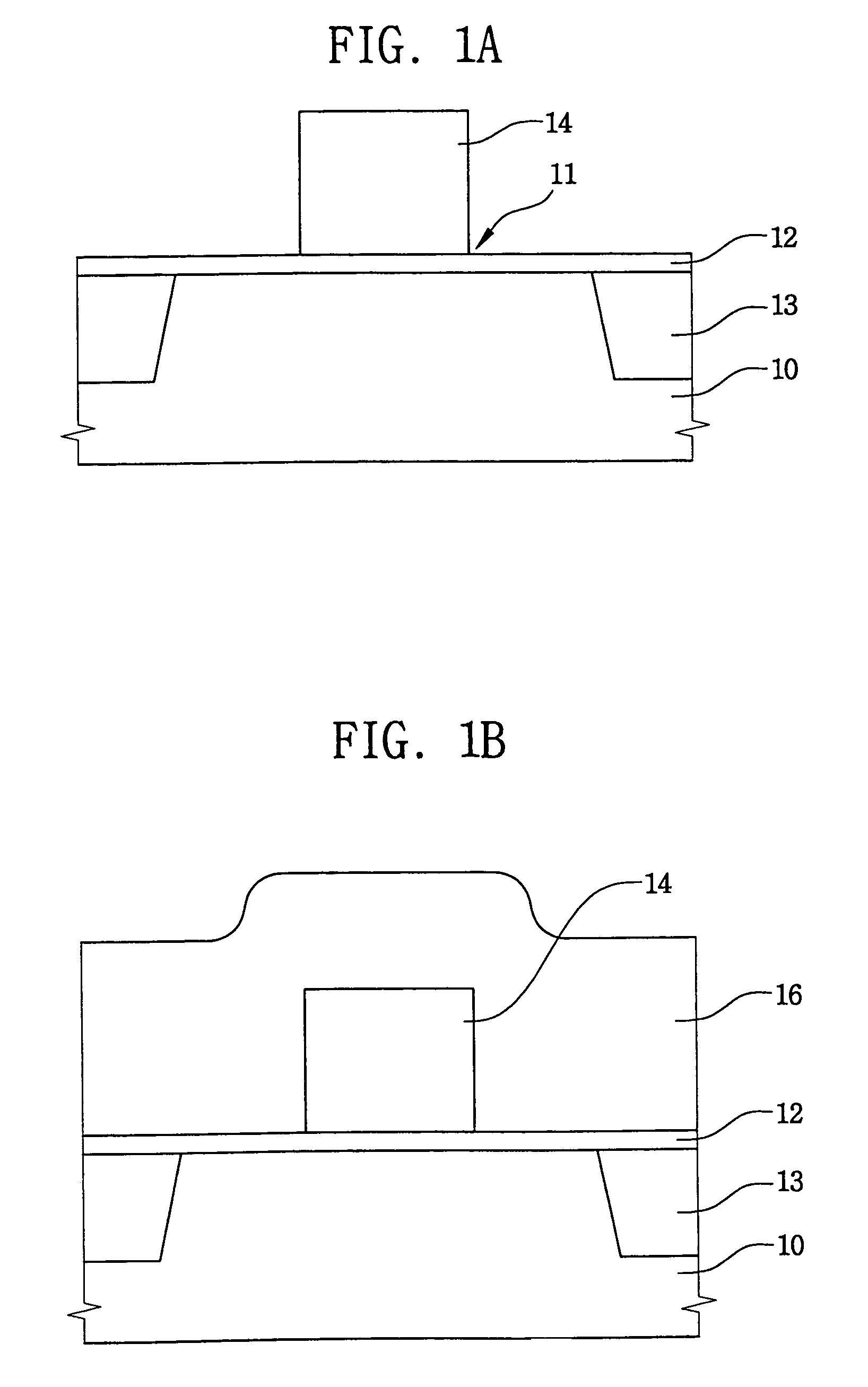Method of enlarging contact area of a gate electrode, semiconductor device having a surface-enlarged gate electrode, and method of manufacturing the same
a gate electrode and contact area technology, which is applied in the direction of semiconductor devices, electrical devices, transistors, etc., can solve the problems of polycide layer on the gate electrode, dopants diffraction to the edge portion, and the insufficient incorporation of the silicium layer into the gate electrode by heat treatment, so as to reduce the electrical resistance of the gate electrode
- Summary
- Abstract
- Description
- Claims
- Application Information
AI Technical Summary
Benefits of technology
Problems solved by technology
Method used
Image
Examples
Embodiment Construction
[0022]The present invention now will be described more fully hereinafter with reference to the accompanying drawings.
[0023]Referring first to FIG. 1A, at least one gate pattern 14 is formed on a semiconductor substrate 10 as follows. The substrate 10 is coated with a first insulating layer 12, i.e., a gate insulating layer, and then the substrate 10 is coated with a first layer (not shown) of conductive material. Next, the first conductive layer is patterned to thereby form the gate pattern 14 on the substrate 10. Therefore, the gate pattern 14 is electrically insulated from the substrate 10 by the first insulating layer 12. A plurality of transistors are disposed on the substrate 10, and are electrically isolated from each other by an isolation structure 13. The isolation structure 13 defines an active region 11 of the substrate 10 in which the transistors operate. Current cannot pass through the isolation structure 13, which constitutes a field region or a non-active region of a s...
PUM
 Login to View More
Login to View More Abstract
Description
Claims
Application Information
 Login to View More
Login to View More - R&D
- Intellectual Property
- Life Sciences
- Materials
- Tech Scout
- Unparalleled Data Quality
- Higher Quality Content
- 60% Fewer Hallucinations
Browse by: Latest US Patents, China's latest patents, Technical Efficacy Thesaurus, Application Domain, Technology Topic, Popular Technical Reports.
© 2025 PatSnap. All rights reserved.Legal|Privacy policy|Modern Slavery Act Transparency Statement|Sitemap|About US| Contact US: help@patsnap.com



